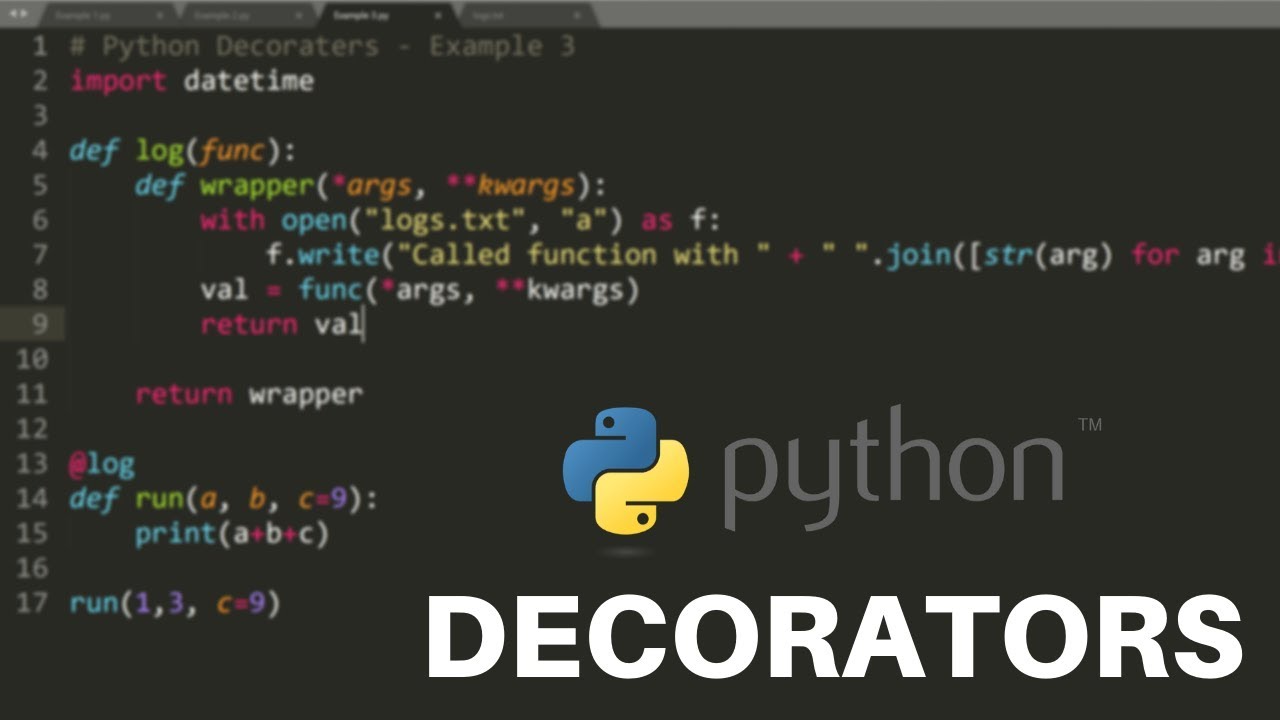
Mastering Python Decorators: A Comprehensive Guide
Python continues to empower developers at all levels, transforming the way we write code with its simple yet powerful functionalities. Among these, decorators stand out as an exceedingly useful feature that, once understood, can enhance the readability, reusability, and functionality of Python code significantly.
What are Decorators?
In the simplest terms, a decorator in Python is a function that modifies another function. This means it can add functionality to the existing function at the time it is defined, facilitating code that is cleaner and easy to understand. Decorators prevent repetitive code by allowing the attachment of additional behavior to functions or methods.
From logging and authentication to caching and timing functions, the applications of decorators are vast. They encourage the DRY (Don’t Repeat Yourself) principle and foster a cleaner coding style.
 Understanding the essence of Python decorators.
Understanding the essence of Python decorators.
The Anatomy of a Decorator
To grasp decorators, it is essential to consider their structure. A typical decorator in Python works as follows: It takes a function as an argument, performs some operations, and returns another function. Here’s a basic example:
def simple_decorator(func):
def wrapper():
print("Executing...")
return func()
return wrapper
@simple_decorator
def say_hello():
print("Hello, World!")
say_hello()
In the code snippet above, simple_decorator is a decorator that adds a print statement before executing say_hello(). The use of the @simple_decorator notation is a syntactic sugar that applies the decorator to the function seamlessly.
Practical Use Cases for Decorators
Logging
One of the most common use cases for decorators is logging. It enables you to log calls to functions without having to modify their definitions. Below is an example of how you could implement a logging decorator:
def log_function_call(func):
def wrapper(*args, **kwargs):
print(f"Calling function {func.__name__} with arguments {args} and {kwargs}")
return func(*args, **kwargs)
return wrapper
@log_function_call
def sample_function(x):
return x * 2
sample_function(5)
This decorator logs the name of the function being called along with its arguments, making debugging a breeze.
 Enhancing code quality using decorators.
Enhancing code quality using decorators.
Authorization in Web Frameworks
In web development, particularly using frameworks like Flask and Django, decorators play a crucial role in managing access control. For instance, to restrict access to certain views based on user roles, you can employ a custom decorator:
def requires_authentication(func):
def wrapper(user):
if not user.is_authenticated:
raise Exception("User not authenticated!")
return func(user)
return wrapper
@requires_authentication
def secure_view(user):
return "This is a secure view."
This pattern preserves the integrity of your views while ensuring only authorized users have access.
The Power of Built-in Decorators
Python ships with several built-in decorators that are incredibly useful. For example, @staticmethod and @classmethod are integral in class design, allowing developers to define methods that are accessible without needing an instance of the class. Here’s how they can be utilized:
class MyClass:
@classmethod
def class_method(cls):
return "This is a class method."
print(MyClass.class_method())
Caching Decorators
Another built-in option is functools.lru_cache, which can optimize functions by caching expensive function calls. This can dramatically improve performance when dealing with recursive functions or any function where calls are repeated with the same arguments:
from functools import lru_cache
@lru_cache(maxsize=None)
def fibonacci(n):
if n < 2:
return n
return fibonacci(n - 1) + fibonacci(n - 2)
print(fibonacci(10)) # Efficiently calculated with caching
Concluding Thoughts
Python decorators are a powerful feature that can significantly ease the development process by providing a clean and efficient way to modify the behavior of functions and methods. Mastering decorators not only elevates your code quality but also aligns with best practices in software engineering. As you venture deeper into Python, incorporating decorators in your toolkit will enable you to write cleaner, more efficient, and more maintainable code. Embrace the versatility of decorators and lead your projects into a new era of readability and performance.
 Join the thriving Python programming community.
Join the thriving Python programming community.















